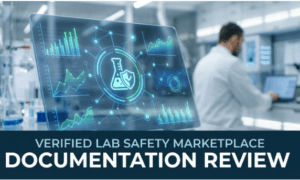Supply chains are increasingly vulnerable to cyber threats. These threats can disrupt operations and compromise sensitive data. Businesses rely more on interconnected systems and third-party providers. As a result, the risk of cyberattacks rises significantly.
Understanding the three biggest cybersecurity challenges threatening supply chains is essential for maintaining operational integrity and protecting your assets.
First, the rise of ransomware attacks poses a serious threat. Cybercriminals can target suppliers and service providers. They can then hold critical data hostage and cripple your operations.
Next, inadequate cybersecurity measures among third-party vendors can lead to vulnerabilities. These vulnerabilities directly impact your supply chain, making vendor risk management a crucial area for improvement.
Lastly, the increasing sophistication of phishing and social engineering attacks can exploit human error. This exploitation results in unauthorized access to systems.
By recognizing these challenges, you can implement effective strategies. These strategies not only safeguard your supply chain but also enhance overall resilience against cyber threats.
Evolving Threats in Cybersecurity
Cybersecurity challenges are constantly evolving. They are driven by advancements in technology and the increasingly sophisticated tactics of cybercriminals. Understanding these threats is critical for protecting supply chains from significant risks.
Increasing Sophistication of Cyber-Attacks
Cyber-attacks have become more advanced, leveraging artificial intelligence, machine learning, and automation. Attackers use these technologies to develop malware that can evade traditional security measures. This makes it challenging for organizations to detect intrusions.
Phishing attacks have evolved as well, using social engineering techniques to target employees more effectively. Campaigns may appear to come from trusted sources, increasing the likelihood of user error.
Organizations must implement robust security protocols. This includes regular training for employees and employing advanced threat detection systems. Failure to adapt may lead to data breaches, which can significantly impact operational integrity and financial stability.
Exploitation of Emerging Technologies
Emerging technologies, while beneficial, also introduce vulnerabilities that cybercriminals exploit.
For example, Internet of Things (IoT) devices are often inadequately secured, serving as entry points for attackers. Their proliferation in supply chains increases potential attack surfaces significantly.
Additionally, the rise of cloud services presents new challenges. Data stored in the cloud is at risk if proper security measures are not in place. Configuration errors or unauthorized access can lead to significant data breaches.
Organizations should prioritize security in the deployment of new technologies. Implementing strict access controls and regular audits can help safeguard sensitive information from exploitation. Investing in security technology is essential for mitigating these evolving threats to maintain supply chain resilience.
Vulnerabilities in Supply Chain Networks
Supply chain networks face significant vulnerabilities due to various factors. Key issues include risks from third parties and the intricacies of global interconnectivity, which can expose your organization to security threats.
Third-Party Risks
Many organizations rely on third-party vendors for essential services. This reliance can create significant vulnerabilities.
- Vendor Security Practices: You need to assess the security measures employed by these vendors. Weak protocols can lead to supply chain attacks.
- Access Control: Inadequate access controls can grant unauthorized access to your systems. Ensure strict controls and dual authentication processes are in place.
- Data Sharing: Sharing sensitive data with vendors increases exposure. Limit data sharing and use encryption techniques to protect information.
Organizations must conduct regular security audits of third-party vendors to mitigate risks.
Global Interconnectivity and Risks
The global nature of supply chains adds complexity and increases exposure to cyber threats.
- Increased Attack Surface: With interconnected networks, a breach in one region can affect global operations. Identifying critical nodes in the network is essential.
- Regulatory Compliance: Different regions may have varying regulations. Ensure compliance across all jurisdictions to avoid legal liabilities.
- Cultural and Technical Differences: Diverse operational practices can lead to vulnerabilities. Tailor your cybersecurity policies to fit the needs of different geographical locations.
Strategies for Mitigation and Response
Addressing cybersecurity challenges in supply chains requires a multifaceted approach. Effective strategies focus on establishing robust frameworks, managing vendors diligently, and fostering a culture of security awareness.
Implementing Robust Cybersecurity Frameworks
Developing and maintaining a solid cybersecurity framework is crucial. This includes adopting standards like NIST Cybersecurity Framework or ISO 27001 to guide your strategies.
- Risk Assessment: Regular assessments help identify vulnerabilities and prioritize risks.
- Equipment Labels: Implementing equipment labels enhances authentication and tracking. This ensures every asset is accounted for and mitigates unauthorized access.
Regularly test and update your cybersecurity policies to adapt to evolving threats. Involving all stakeholders in establishing these frameworks promotes a culture of security throughout the supply chain.
Adopting Best Practices for Vendor Management
Vendor relationships can expose you to cybersecurity risks. Implementing stringent vendor management practices is essential to mitigate these risks effectively.
- Due Diligence: Conduct thorough assessments of third-party vendors’ cybersecurity policies and procedures.
- Contractual Obligations: Include specific security requirements in vendor contracts to ensure compliance.
Regular audits and performance reviews can help maintain cybersecurity standards across your supply chain. This proactive approach ensures that vendors align with your security protocols and mitigate shared risks.
Investing in Cybersecurity Training and Awareness
Human error is often a significant factor in cybersecurity breaches. Investing in training programs can drastically reduce risks.
- Regular Training: Schedule training sessions that focus on recognizing phishing attempts and safe data practices.
- Awareness Campaigns: Use posters, newsletters, or digital alerts to keep security top of mind across your organization.
Empowering your employees with knowledge and skills creates a robust first line of defense against potential cyber threats. This ongoing education fosters a proactive security culture.

































